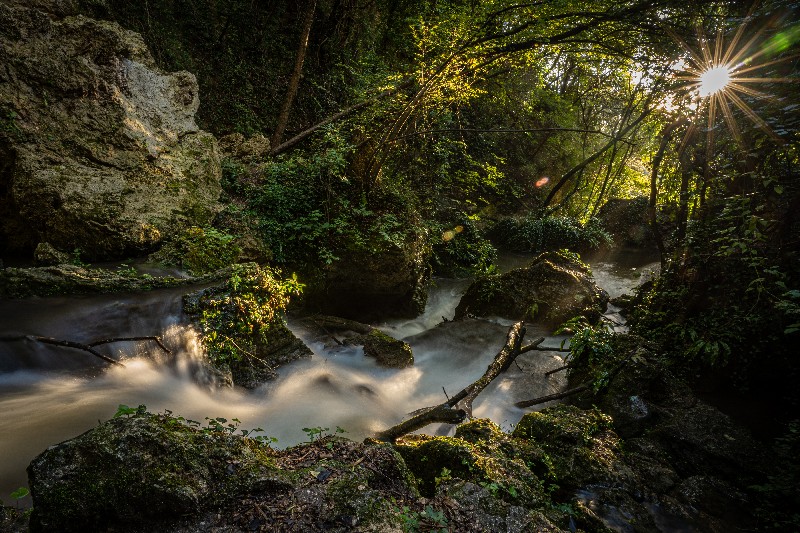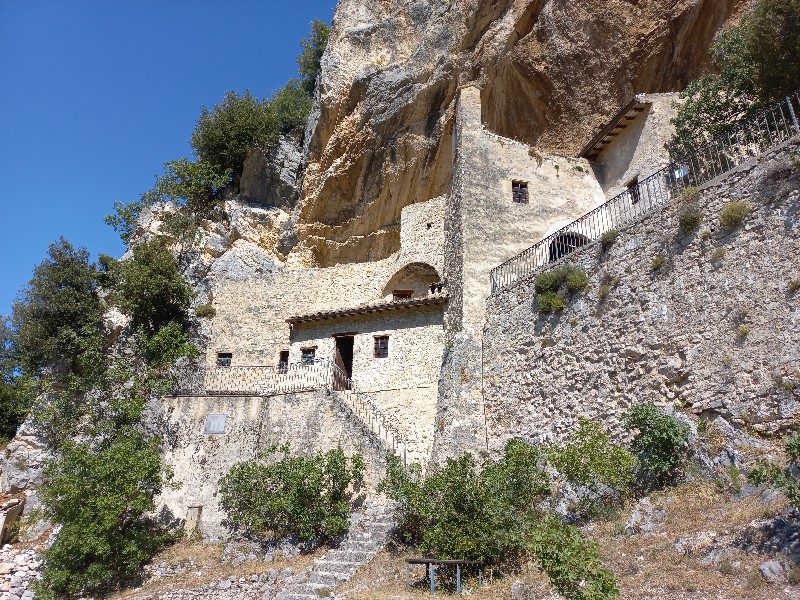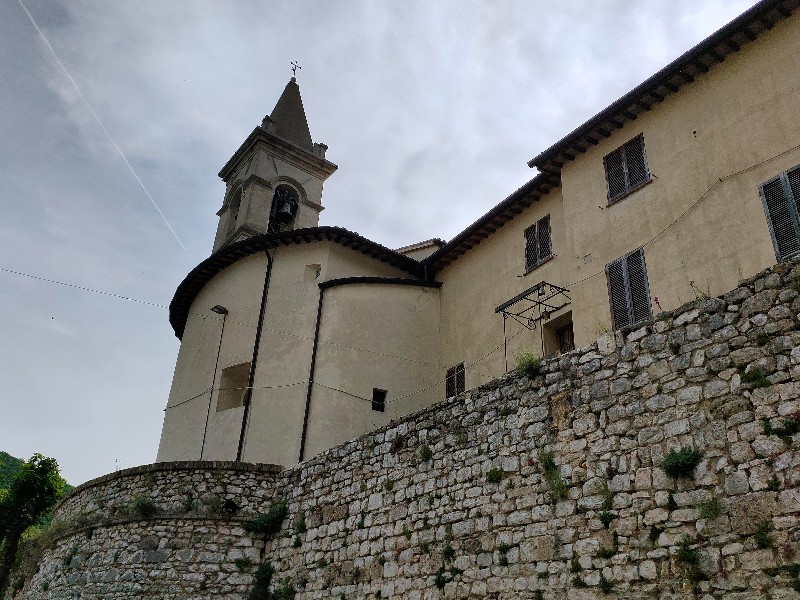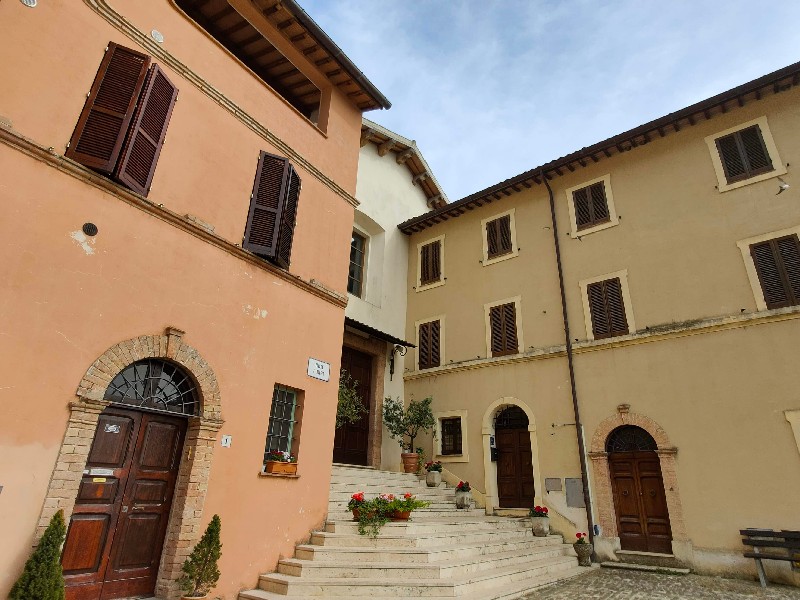Pale rises along the course of the Menotre River, and is crossed by the ancient road to Colfiorito, later renamed "Lauretana". The core of the castle borders to the west with the Altolina waterfalls, while on the opposite side rises the Sasso di Pale mountain with the Hermitage of Santa Maria Giacobbe nestled into its rocky cliff.
The village of Pale is at the heart of the Altolina Park, an area of high naturalistic value extending west of Belfiore, comprised not only of the waterfalls and the Hermitage, but also of caves, gorges and cliffs.
The inhabited area of Pale is attested starting from 970 AD and it soon fell under the jurisdiction of the nearby Benedictine Abbey of Sassovivo. From the 13th century the Elisei family from Foligno settled in the castle, building a palace and gardens. The site's productive vocation gradually consolidated for the easy exploitation of the force of water for power. Pale became a village renowned for its many paper mills, with the paper here produced, also used in 1472 for the first printed edition of Dante Alighieri’s Divine Comedy.

Il progetto Divina Foligno è sviluppato nell’ambito del “programma Agenda urbana di Foligno Smart community - Comunità, Sostenibilità – Foligno 2020” intervento OT.6 INT_01 “Realizzazione della rete di attrattori culturali attraverso la realizzazione di itinerari culturali e tematici

The Divina Foligno project is promoted and financed as part of the "Urban Agenda of Foligno Smart community - Community, Sustainability - Foligno 2020 program" intervention OT.6 INT_01 "Creation of a network of cultural attractions through the creation of cultural and thematic itineraries"

Copyright © 2022 Landmark. All rights reserved.




